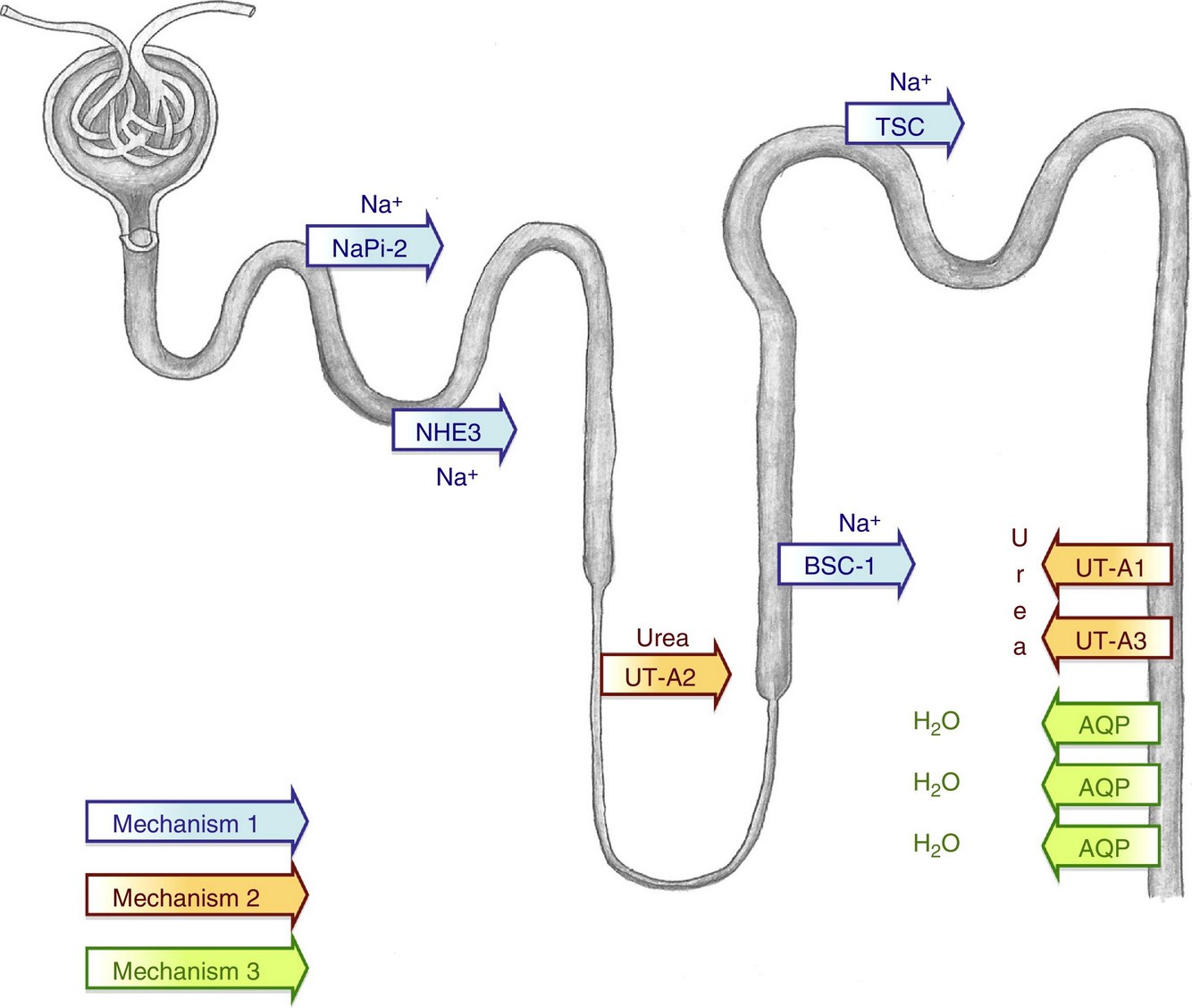
Clearance studies
Clearance is defined, as the amount of plasma required to clear off a substance in a period of time. Clearance of inulin and creatinine measures GFR, while the clearance of PAH and Diodrast measures RPF.
Inulin clearance
Inulin is a fructopolysaccharide with a molecular weight of 5200 and obtained from the Dhalia tubers. Inulin when injected into the body, is almost (90%) filtered in the glomerulus in one circulation. Since it is neither reabsorbed norsecreted in the renal tubules, the rate of excretion of inulin will be equal to the rate of filtration. The rate of excretion can be calculated from U×V, where U is the amount of inulin in the urine in mg/ml and V is the volume of urine in ml/min. Since a small amount of inulin, still remains in plasma, the plasma concentration is also taken into account (P). Normal value is 125 ml/min. In females it is 10% lower. In old age, the GFR is decreased. The value is also decreased in glomerulonephritis and acute renal failure.
Endogenous creatinine clearance
Creatinine is produced in the body from the metabolism of creatine present in muscle. Creatinine is both filtered and secreted. However, the GFR value is close to inulin clearance.
Urea clearance
Urea clearance can also be measured, but it depends on the urine flow rate. If the urine flow is 2 ml/min, maximum urea clearance is present, which is 75 ml/min. If the urine flow is less than 2 ml/min, then standard urea clearance will be present and its value is 54 ml/min.
Renal concentration test
The ability of kidneys to concentrate the urine is affected in renal failure. The test can be done by asking the subject to stop fluid intake for 12 hrs. The urine excreted thereafter is collected (4 samples) and its specific gravity is determined. Normal specific gravity of urine is 1010 and in maximum antidiuresis it goes up to 1030.
Renal diluting ability
The ability of kidney to dilute the urine (diuresis), when fluid volume in the body is increased can be tested by asking the subject to drink 3 to 4 lit of water. Four samples of urine are collected after 40 minutes duration and their specific gravity are determined. One of the samples should show specific gravity of 1002, which indicates maximum diuresis.
Urine analysis
Urine is analyzed for its volume, reaction, specific gravity and for the presence of any abnormal substances such as RBC, pus cells, casts, blood, glucose, albumin, increased ketone bodies and bile pigments.
Blood examination
The estimation of blood urea nitrogen (BUN), (20 to 40 mg%) creatinine (1.5 to 2 mg%) K+ and reaction of blood, will indicate renal pathology, if there is any change from their normal values.
Intravenous pyelography
Infusion of radio opaque substance (iodinated radioactive compound) gives X-ray shadow of renal blood vessels, pelvis of kidney and ureter. Presence of renal stones and vascular lesions if any, can be visualised by this procedure. Renal biopsy and scanning of kidneys are also undertaken to detect the presence of any malignant tumor.
Source: Textbook of Physiology, 3E (Chandramouli) (2010)